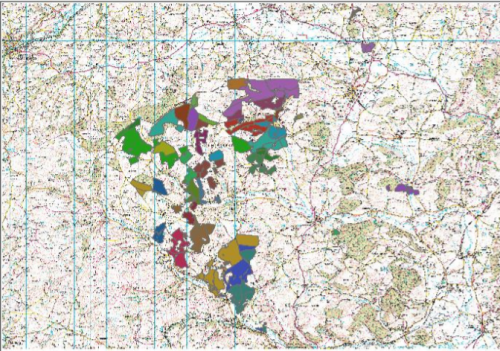Ref: CSFF060007
Lead: Joy Greenall, joy.greenall@greenal1.plus.com
Group members: 28
Length of agreement: 3
Area of group (Hectares): 4149
Priorities: Biodiversity, Water and Woodland, with cross-cutting multiple environmental benefits.
-Priority habitats will be maintained/restored by connecting parcels of land. This will increase the natural capital of the uplands delivering multiple environmental benefits.
– Increasing the extent of purple moor grass/rush pastures; upland flushes/swamps; upland heathland; upland hay meadows; ancient/native woodland and riparian habitats will deliver priority species (including lapwing, curlew, lesser horseshoe bat, small pearl-bordered fritillary). (Maps 3-6 show Curlew monitoring & breeding/foraging areas).
-Planting new woodland will: – buffer/link existing woodlands and other semi-natural open habitats within priority woodland habitat networks – reduce/intercept diffuse pollution from agriculture – increase infiltration of heavy rain into the ground, reduce erosion, and ‘slow -the-flow’.
– Linking-up dingles (steeply-sided valleys/gullies which are reservoirs of biodiversity) will help reduce nutrients/sediment in the Clun catchment, protect relocation sites for Freshwater Pearl Mussel (FPM) and reduce nutrient input to the Upper Teme.
– Areas of the catchment will be explored for ‘slowing-the-flow’ and water pollution mitigation opportunities – e.g. tree planting, creation of upland flushes, rush pasture/ponds and changes in farm management – to reduce soil erosion and help flood risk in Rivers Clun, Unk & Folly Brook, upstream of Clun.
– Local interest in landscape history will provide opportunities to promote orchard restoration, linking species-rich hedgerows etc. A strong ‘sense of place’ exists in the Clun Forest. Scheduled Ancient Monuments lie in our area (Offa’s Dyke, Iron-Age hillforts/settlements and Bronze-age barrows, the care of which is included in our plans.

